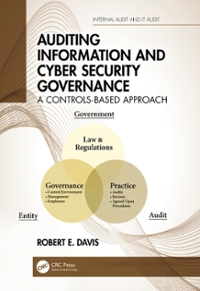Question
PART A (MAX 500 words in total) Effective 2019, the new accounting standard on leasing, AASB16 Leases, will replace the existing leases standard, AASB117. It
PART A (MAX 500 words in total)
Effective 2019, the new accounting standard on leasing, AASB16 Leases, will replace the existing leases standard, AASB117. It will remove the classification of leases that has been used for decades and which divides leases into operating and financial leases from the perspective of lessees. The new standard requires leases that were formerly known as operating leases (and were kept off balance sheet) to be recognised for balance sheet proposes (both an asset and a liability will be recognised).
Required:
Evaluate how total assets, total liability and equity would be affected by the new accounting standard on leasing from the perspective of lessees. (5 marks)
The changed standard means that leases with a short-term (e.g., several months) will appear on a balance sheet of lessees, as will leases with a long-term (e.g., multiple years). Discuss whether this new approach is consistent or inconsistent with the definitions of assets and liabilities included within the IASB Conceptual Framework. (5 marks)
PART B (MAX 500 words in total)
Microsoft historically followed the practice of recognizing 25% of revenue from its Windows software over three or four years as it promises future upgrades and add-ons. With the launch of Vista in 2008, it changed the policy to record most of the revenue in the period in which the software was sold. In the third quarter for fiscal year 2008, Microsoft reported an increase in earnings of 65%. The increase came from sales of the new Vista program and also from the acceleration in revenue recognition.
Required:
Critically evaluate the revenue recognition policy adopted by Microsoft in accordance with AASB15 Revenue from Contracts with Customers. (5 marks)
Explain the decision of management to change the revenue recognition policy in terms of the debt hypothesis of Positive Accounting Theory. (5 marks)
Step by Step Solution
There are 3 Steps involved in it
Step: 1

Get Instant Access to Expert-Tailored Solutions
See step-by-step solutions with expert insights and AI powered tools for academic success
Step: 2

Step: 3

Ace Your Homework with AI
Get the answers you need in no time with our AI-driven, step-by-step assistance
Get Started


